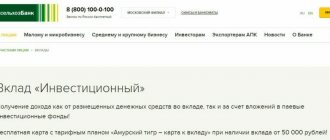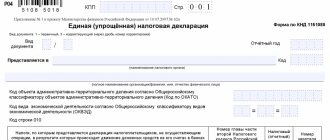Why are special tax regimes needed?
To support and stimulate business development in the tax system of the Russian Federation, in addition to the general taxation system, there are also five special ones.
Special regimes are most common in small and medium-sized enterprises, as they can significantly simplify the system of paying taxes and submitting reports, as well as save on payments.
The principles of taxation that operate in Russia comply as fully as possible with generally accepted international standards and are developed on their basis.
Video: SNR for small tax entities
In the general study of taxes and taxation, careful attention is paid to special tax regimes. Detailed information about them with vivid examples is in the following video:
A person can choose any special tax regime completely independently. Of course, it is important to pay attention to which types of tax regimes are right for you, that is, which types you qualify for and which ones you do not. Either way, this is a great opportunity to avoid paying all or some federal taxes.
The concept of “special tax regime” according to the Tax Code of the Russian Federation
The concept of “Special tax regime” implies a special procedure for determining and collecting taxes, as well as exemption from their payment, subject to certain conditions.
The purpose of its introduction is to provide budding entrepreneurs with the opportunity to work in more favorable conditions.
What does the transition involve?
The criteria by which the possibility of switching to one of the special systems is determined may be:
- the type of activity the enterprise is engaged in;
- number of company employees;
- the amount of income received;
- type of ownership.
Requirements for financial statements: read here.
Beauty salon from scratch: business plan step by step.Business ideas: how a woman can start a business.
The use of special modes has the following positive aspects:
- many priority areas of entrepreneurship experience a lower tax burden;
- special tax payment conditions stimulate the development of small businesses;
- the level of shadow turnover decreases;
- in areas where special regimes are used, tax collection increases.
What all existing special tax regimes have in common is that they replace the many levies of the general system by introducing one single tax.
The specific rate, tax base and features of its calculation depend on the specific type of special regime.
What taxes to pay on the simplified tax system
The simplified tax system is one of the special tax regimes that make accounting easier and reduce the tax burden. It is regulated by Chapter 26.2 of the Tax Code of the Russian Federation.
Simplified taxation is popular among businesses because, unlike OSNO, you only need to pay one tax instead of three. The single tax according to the simplified tax system replaces:
- value added tax;
- income tax for legal entities or personal income tax for individual entrepreneurs;
- property tax.
There are cases when these taxes still have to be paid. For example, when importing goods from abroad, even simplified people pay VAT. And if real estate is assessed at cadastral value, then property tax cannot be avoided. A complete list of exceptions is given in Art. 346.11 Tax Code of the Russian Federation.
Also, legal entities and entrepreneurs retain the obligation to pay transport and land taxes if they own suitable property.
The main tax on the simplified tax system is the simplified tax itself. It is paid once a year: organizations until March 31, and entrepreneurs until April 30. At the same time, they submit their annual declaration. In addition, advance payments must be made quarterly by the 25th day of the month following the reporting quarter.
Also, simplified individual entrepreneurs are required to pay insurance premiums “for themselves.” In 2020, this is 40,874 rubles plus 1% of revenue over 300,000 rubles.
Characteristics and comparative analysis of types of special modes
The Tax Code of the Russian Federation has five special regimes that payers can use if they have grounds for doing so. Each of the systems has both its advantages and disadvantages, so we will conduct a comparative analysis of each of the popular types.
Taxation system for agricultural producers
This tax regime is available only to those enterprises and individual entrepreneurs whose activities are related to agriculture. Moreover, income from this activity must cover at least 70% of the total total income received.
Activities that fall under the Unified Agricultural Tax:
- crop production;
- livestock farming;
- breeding and growing fish;
- forestry, etc.
To have the right to apply this tax system, entrepreneurs must produce such products, and not engage in their further sale or processing.
The transition to the Unified Agricultural Tax regime is carried out voluntarily and subject to the necessary conditions for this, by submitting a special application to the tax office.
This system is in many ways similar to the simplified tax system, with the only difference being that it is used for agricultural enterprises. The single tax replaces the profit tax for LLCs, and the income tax for individual entrepreneurs, and also for both of them – property tax and VAT (except for customs). At the same time, personal income tax will continue to be paid for its employees - both individual entrepreneurs and enterprises.
The tax rate is 6%, and the base is profit - income received minus all documented expenses. In this case, it is possible to reduce the amount of income by subtracting losses from previous periods.
Simplified taxation system
This system is available for both individual entrepreneurs and legal entities. To switch to it, you need to submit a special application to the tax office. This can be done only within three days after registration of a newly created economic entity or from October 1 to November 30.
For LLCs, the single tax replaces:
- income tax;
- property tax.
Individual entrepreneurs will not pay taxes such as:
- personal income tax;
- property tax.
Also, all taxpayers are exempt from paying VAT (except for customs). At the same time, the obligation to pay insurance contributions to the pension fund remains with both the LLC and the individual entrepreneur.
The single tax can be calculated in two ways:
- from the income received - in the amount of up to 15% (a specific figure may be established by regional legislative acts);
- from the profit received (income minus expenses) – 6% of the amount.
The simplified tax system is not available for all types of activities: banking, insurance, investment sectors, production of excisable goods and transactions with securities are not covered by this system. For individual entrepreneurs there is also a limit on the number of employees - there should not be more than 100. The list of restrictions for organizations is much wider:
- sales income for 9 months of last year should not exceed 45 million rubles;
- the value of the property cannot exceed 100 million rubles;
- there should be no branches or representative offices;
- the share in the authorized capital of legal entities cannot be more than a quarter.
If during the reporting period the value of property that was sold exceeds 60 million rubles, then both organizations and individual entrepreneurs will have to return to the general regime.
Unified tax on imputed income (UTII)
The use of the UTII regime is also available for both individual entrepreneurs and organizations, and since 2013 it has been a completely voluntary decision of the payer. Its essence is that the taxpayer pays one tax in the amount of 15% of the tax base instead of several different ones.
The peculiarity of the regime is that the tax base does not depend on the actual result of the activity.
The amount of income or profit does not matter, since the tax is paid on imputed income.
Imputed income is an amount of money that is set at a fixed value and is considered the average indicator of profitability of a particular type of activity.
UTII can be combined with other regimes, since this system is applied only to a legally established list of activities:
- transport transportation (both passengers and cargo), as well as servicing various types of vehicles;
- retail;
- catering industry;
- provision of veterinary services, etc.
Each region of the Russian Federation has its own list of specific types of activities that fall under this regime. There are also restrictions on the scale of operation of the enterprise, that is, according to such criteria as:
- number of personnel (no more than 100);
- share of other legal entities in the authorized capital (less than 25%);
- production area (depending on the type of activity).
Also, an LLC or individual entrepreneur should not be a large taxpayer. If all indicators remain unchanged, then the declaration is drawn up only once and then duplicated every three months.
With UTII it is not possible to submit zero declarations and not pay tax if there is no activity. The taxpayer is obliged to either make all contributions on time or switch to another tax regime.
Taxation system for the implementation of production sharing agreements
This regime is used to regulate the relations of the parties to a production sharing agreement and replaces part of the taxes required for payment. The parties to the agreement are:
- An investor is an entrepreneur who pays a certain amount of money to obtain the right to search for and extract minerals in the territory specified in the agreement.
- The state represented by the local executive body, which grants the investor the right to use the subsoil.
In accordance with the terms of this system, in the case of production of valuable products, it will be divided between the investor and the state. This division will replace part of the taxes and fees established by law. At the same time, he must pay taxes such as:
- VAT;
- insurance premiums;
- income tax;
- excise tax;
- state duty;
- mineral extraction tax;
- payments for the use of natural resources;
- land tax;
- payment for having a negative impact on the environment.
Almost all of these taxes will be reimbursed to the investor in the future. The division of manufactured products can be carried out using two options:
- 75% and 25% (between the investor and the state, respectively) – the basic option;
- 68% and 32%.
The profit before tax formula is everything you need to know about calculating the final result of a company’s activities.
The latter option is rarely used, only in exceptional cases, and may depend on the feasibility study of the project or the cost assessment of the subsoil.
Find out what a business plan consists of.
How to open a bookmaker's office?An example of a hookah bar business plan: read here.
Patent tax system
This tax regime is available only to individual entrepreneurs and is aimed at stimulating the development of small businesses. It can be used by individual entrepreneurs who are engaged in a limited list of activities, for example:
- provision of hairdressing services;
- shoe repair work;
- tailoring;
- cosmetic services;
- individual educational services (tutoring or course management);
- design services;
- furniture repair, etc.
An entrepreneur engaged in one of these types of activities may apply the patent system if the following conditions are met:
- it has no more than 15 employees;
- its revenue for the year is less than 64.02 million rubles.
The work is carried out on the basis of the received patent - it is valid for one year and only in the territory of the constituent entity of the Russian Federation where it was issued. The tax is set at 6% of potential income.
The latter value is prescribed in local regulations and can range from 100,000 rubles. up to 1 million rubles Also, depending on various factors, it can be adjusted using special coefficients.
At the end of the year or before the end of the patent's validity period, it must be renewed - without fulfilling this condition, the entrepreneur will not be able to further work on this system.
Also about special tax regimes, watch this video:
Comparison of tax principles
The application of a special regime should be based on the following principles:
- Simplification of the taxation procedure - many taxes existing under the general regime are replaced by one. This makes the procedure for calculating and paying them more convenient and simpler.
- Tax favoring – a special regime must have more lenient and favorable conditions for the payer, otherwise its use will be meaningless.
- Voluntariness – the entrepreneur himself decides whether to remain in the general taxation regime or switch to a special one.
- Selectivity - legislation establishes restrictions on the type of activity and scale of the taxpayer, who has the opportunity to switch to a special regime.
- Coexistence - all regimes provide for the application of both a single tax and other mandatory contributions (for example, insurance).
- Substitution - a single tax of each special regime replaces several others from the general system.
- Taking into account the peculiarities of the economic conditions of each subject - this principle is implemented by introducing various adjustment coefficients.
The use of special regimes is aimed at helping start-up entrepreneurs and small organizations withstand the existing competition in the market and be able to continue their activities.
The conditions of special regimes help reduce the tax burden and significantly simplify the maintenance of reporting documentation for taxpayers.









